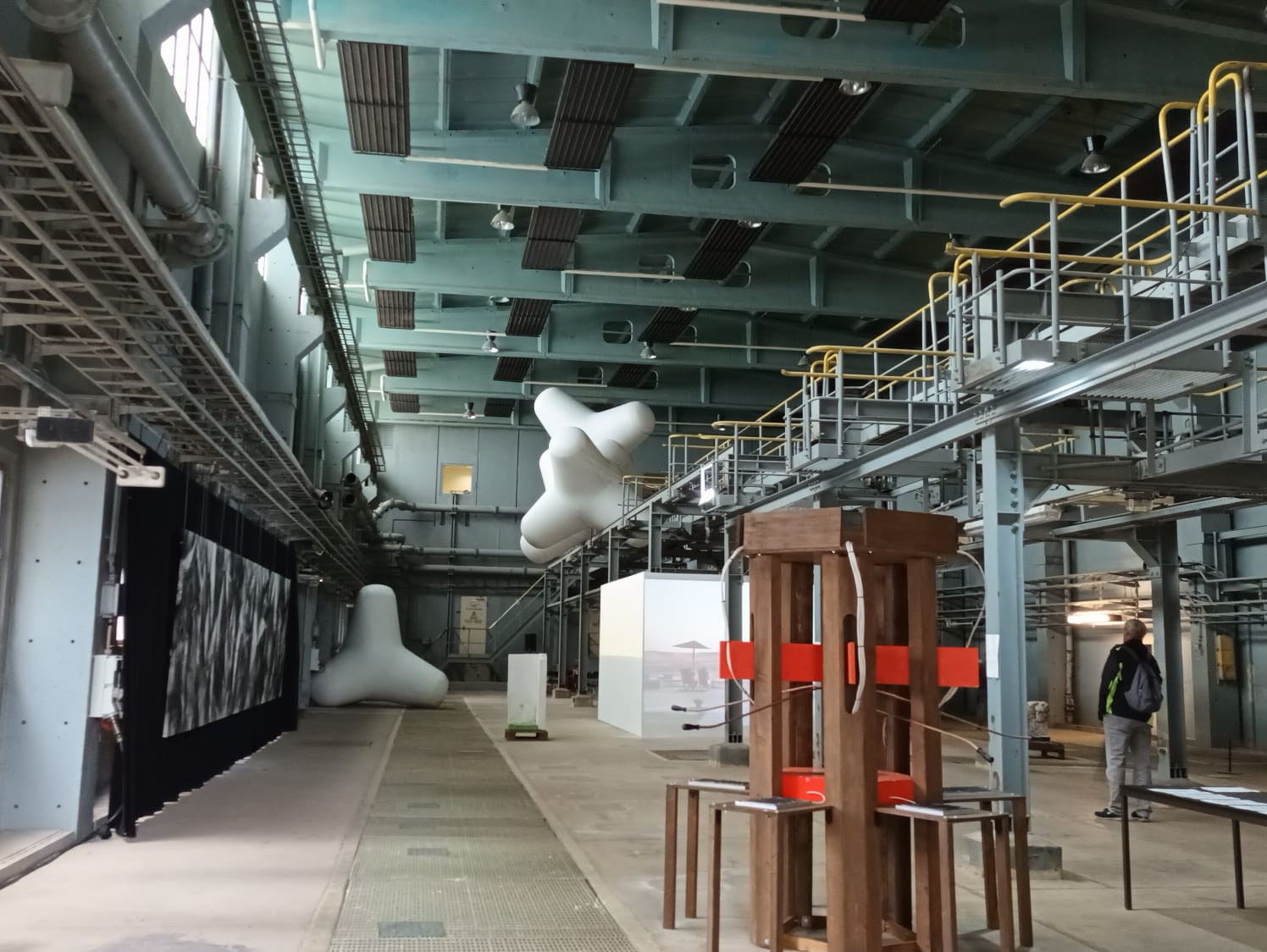In the volunteer editorial team, volunteers for Chemnitz 2025 publish reports on their experiences, assignments and adventures around the European Capital of Culture.
Heidi is 72 years old. She lived and worked in Chemnitz for many years. Heidi is interested in art, culture, languages and music. Together with her husband, she put together an extensive presentation on the subject of "C-the unseen", reflections on Chemnitz as European Capital of Culture. In the process, they uncovered many a hidden gem. Heidi has been a volunteer since April.
Working on the site of the former Chemnitz-Nord cogeneration plant on 31 July 2025 was an impressive experience for me. The contrast between the urban lost-place environment and the installations and artworks that shed light on the environmental problems of our time could not have been greater. The huge cooling towers, now unused concrete, the steel scaffolding and empty factory buildings hit you unprepared. Climate-damaging history meets the subject - everything interacts. What now? This is the question. It took courage and ingenuity to use this space as a place to reflect on the wounds of our time. The organisers of the event succeeded.
The festival is not new to Chemnitz. In the year of the European Capital of Culture, it is already inviting people to an unused square for the 22nd time. However, there is one special feature this year. The artists who are transforming the former thermal power station into a huge art object come from all over the world. It is impossible to go into detail about each of the 32 works. They deal with species loss, waste of resources, climate change, visual and acoustic food for thought on these problems.
Nevertheless, I would like to mention two objects. One is the work of Colombian artist Daniel Otero Tores, whose work focuses on the social and ecological consequences of illegal gold mining in the Colombian Amazon region. The unspeakable pollution of the water and the destruction of natural resources and habitats is the result.
The giant white tetrapods by artists Abie Franklin and Daniel Hölzl entitled "Bycatch", which can be seen everywhere in the rooms, attract attention. In real life, they are concrete breakwaters that protect stretches of coastline. Here, they are balloons filled with air, which have somehow weightlessly come apart at the seams. Humans want to keep nature under control, but it is becoming increasingly difficult to tame the spirits that have been conjured up.
An astonishing number of people from near and far visited these halls. There were interesting conversations and exchanges of opinions about the installations on display. I also spoke to children and young people who were on their summer holidays with their parents or grandparents. They surprised me with clever thoughts and reflections on the works on display. It concerns their future.
